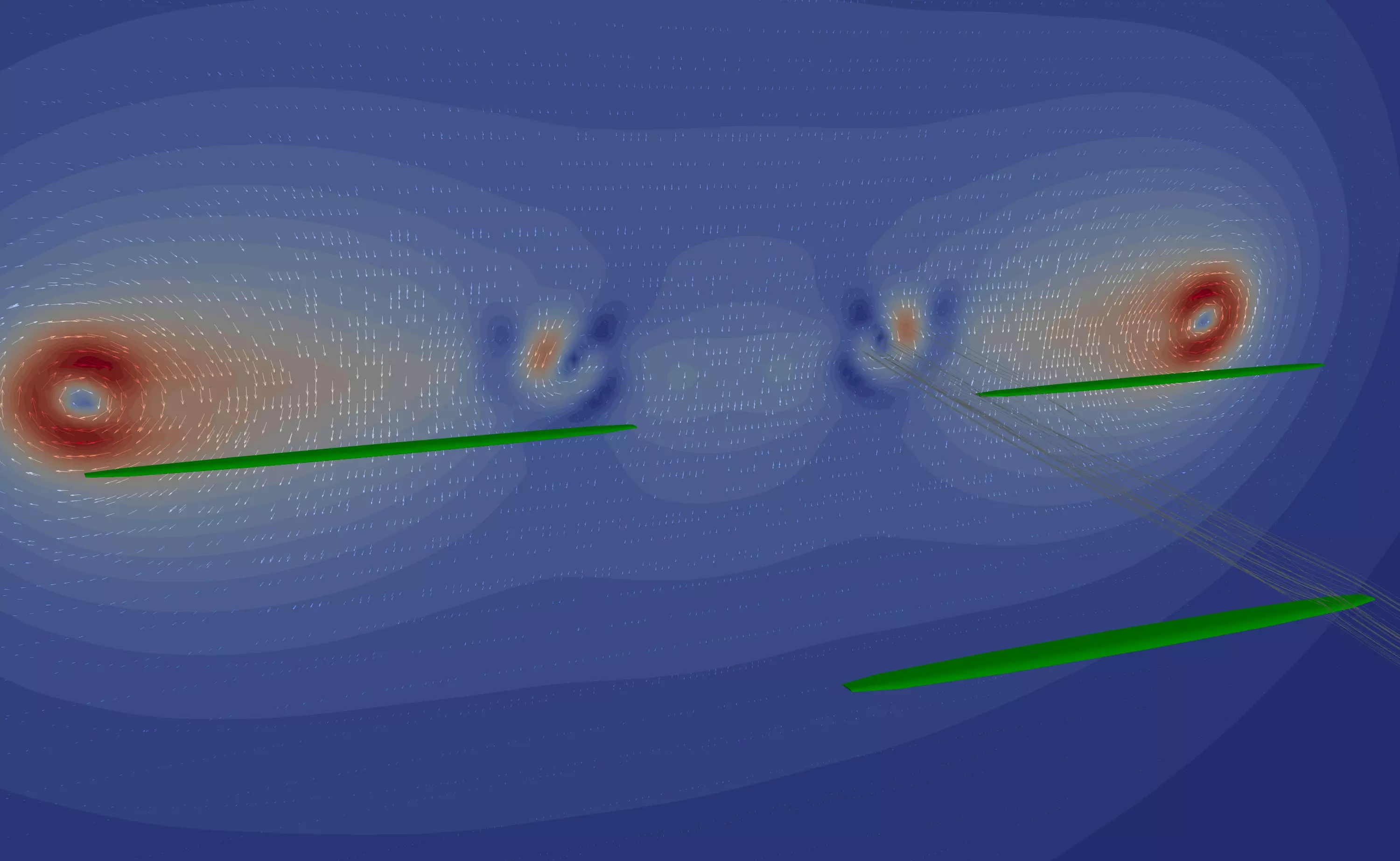Project Example: SNF Project: High-alt-drones HAPS
Multi-disciplinary optimization of high-flying platforms in formation flight
High-flying platforms are an alternative to observation and communication satellites. The advantages are lower launch costs, longer dwell time at one position and the avoidance of space debris. However, the platforms require energy for their aerodynamic flight. Therefore, the aerodynamic quality must be optimized, which is usually realized by large wingspans. With a large wingspan, however, the aircraft becomes sensitive to gusts in the lower atmosphere during ascent. A remedy is the formation flight of several smaller aircraft. In this project, the various aspects are investigated, and an optimization is carried out, which includes aerodynamic and flight-mechanical as well as structural-mechanical aspects.
Alternative to satellites
High-flying platforms are aerial vehicles that can replace satellite technology at low cost. However, there are technical challenges that need to be optimized. For example, these platforms need a propulsion system that must compensate for the energy losses in the airflow. The energy for this can be obtained from the fuel carried on board and from solar panels. To achieve a long flight time, the aerodynamic quality must be as high as possible in addition to the lowest possible weight. This leads to large wingspans of such aircraft, which, however, means a higher structural weight. Likewise, a large wingspan leads to reduced maneuverability, which has disadvantages during take-off and landing.
Numerous calculation and optimization tools
To shed light on this multi-physical optimization topic, many tools were used: openaerostruct for structural optimization, XFoil and OpenMDAO for the aerodynamic topics as well as CFD simulations for formation flight.
Formation flight
Migratory birds use close formation flight to save energy together. At the wingtips, the greater negative pressure on the upper side of the wing meets the lower negative pressure on the bottom side. A compensating flow occurs, which pulls the air like a corkscrew into the negative pressure area on the upper side. This creates an area of upward flowing air next to and behind the bird ahead that the birds intuitively use. In manned aviation, flying close together places increased demands on pilots to avoid collisions.
With computer-controlled drones today, precise formation flying is quite feasible. In this study, formation flying was simulated. The results from previous studies could be confirmed.

Laminar airfoils
The airfoils must generate sufficient lift during take-off and landing as well as at very high altitudes, i.e., at low air density, and at the same time have as little drag as possible. The longest possible laminar flow around the airfoil is aimed for. Using XFoil and OpenMDAO, the airfoil drags of several airfoils at different air densities were determined and stored as a database for further optimization.
Multi-parameter optimization
Wing shape, airfoil, flight speed, lateral distance, and depth separation in formation flight as well as the flow conditions around the leading drone and the following drone were varied. In this way, the drag can be determined, but also the parameters that are important for flight control. The drone mass was set as fixed at 75 kg in all optimizations.
The sensitivity (robustness) of the optimization results was tested by parameter variations.
Results
The findings on formation flight known from the literature could be confirmed with the simulation and optimization tools used. It could be shown that optimized drones with a smaller wingspan approach the performance of a large wingspan drone in formation flight. This has great structural advantages - it can be built lighter. Likewise, the handling of the aircraft during take-off and landing is greatly improved.
At a glance
Participating institutes and centers:
Project Partner: Research project without industrial partner
Financial contribution: SNF
Project status: completed